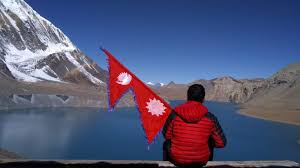For quite some time, the economy of Nepal is taking a downward turn. The previous government under Nepali Congress leader Sher Bahadur Deuba and the present government under Pushpa Kamal Dahal ‘Prachanda’ adopted certain measures to revitalise the economy. Despite that, the economic condition of the country continues to deteriorate. The government is receiving revenue that is hardly enough to meet the recurrent expenditures. Heavy loans with certain conditionalities could put Nepal in a debt trap. Fear is also looming large that Nepal could be greylisted by the Financial Action Task Force (FATF), a global anti-money laundering watchdog, that could further negatively impact the growth of the country.
People’s livelihood is largely affected due to inflation, which is 8 percent on-year basis. The government has zero control over inflation as the country is import-dependent. Due to the increase in prices in the international market, Nepal is forced to procure goods, including fuels, chemical fertilisers, food, etc. at a higher price. While the prices of goods, land, and shares are increasing at an exponential rate, there is no growth as such in the agricultural, industrial or even service sectors.
Because of the lack of meaningful job creation in the country, larger sections of the working population are forced to leave the country for jobs in foreign countries. Of the 30 million population in Nepal, nearly 1,500 youth are leaving the country each day for jobs in overseas countries.
There is no data about the youth leaving Nepal for jobs in the Indian market, but estimates are that some 8 million Nepalese live and work in India. It is not only the educated people but also the semi-skilled and unskilled people who leave the country. Of all these categories of labour migrants, the share of unskilled labour is 74.5 percent.
Nepal is one of the few countries in the world that supplies larger sections of its population to foreign countries for employment. By doing so, Nepal receives as much as US$8 billion in the form of remittances which is almost one-fourth of the country’s total Gross Domestic Production (GDP). But then it is largely consumed by the expenses of education, health, recreation, and tourism. There is not much use of remittance in the productive sector.
In the recent years, Nepal is also hardest hit by the liquidity crisis. To raise liquidity, the banks raised the interest rate on the deposits to as much as 12 percent. So, the lending rate by the banks shot up to 14 percent or even more. But then neither the bank deposits could grow adequately nor was there any investment growth. Considering the inflation of 8 percent, people are not so much interested in making deposits as they are getting merely 3 to 4 percent interest in real terms.
The expectation was that things would return to normal after three levels of elections in the country i.e., the local elections in May 2022 and the provincial and federal elections in November 2022. But unfortunately the liquidity crisis continued. There is a slowdown in construction-related activities in the country, which has led to a decline in the demand for cement, steel, and other goods.
The debt-to-GDP ratio increased from about 38 percent in 2017 to 42 percent in 2022, but there was no such increase in capital formation. Nepal’s foreign exchange reserve of US$9 billion is not enough to meet the imports for more than six months. Given this crisis, Nepal had to restrict the imports of luxury items like gold, cars, and cosmetic items for quite some time. The country’s export-to-import ratio that was 50 percent in 1999 fell down perceptibly to 8 percent in 2019.
To add to Nepal’s woes, the Asia-Pacific regional watchdog of FATF recently visited Kathmandu to assess how Nepal addresses issues related to money laundering and terror financing. The watchdog is likely to produce its report in February. Speculations are high that it could put Nepal on the greylist considering the deficiencies in its legislation enforcement of laws regarding money laundering and terror financing. Nepal was likely to be blacklisted in 2012 after it was greylisted in 2008, but somehow it was protected on account of diplomatic efforts. If Nepal is greylisted this time, it might seriously affect the economy of the country as it is overdependent on foreign aid, remittances, and imports. Greylisting of Pakistan between 2008 and 2019 resulted in cumulative losses of GDP to the extent of 38 billion affecting consumption, exports, and foreign direct investment.
It is also feared that the recently-built Pokhara International Airport which was constructed with financial support from China’s EXIM Bank could prove a white elephant, similar to that of Hambantota of Sri Lanka which was also built by China. The Nepalese rejected China when it claimed this airport as a BRI project. Work on this airport had started several years before Nepal signed an agreement with the EXIM Bank for this project in 2016. Since the airport was not designed to attract much traffic, chances are high for Nepal to incur huge economic losses due to this project. What if Nepal fails to repay the loan for this project? In that case, can it prove to be the Hambantota of Nepal?
It is, indeed, worrying that most of the sectors in the Nepalese economy are declining and the nation is almost forced to get more loans with conditionalities. Chances are high that certain leaders in command of the country could take loans without caring about how to repay. In such a case, the country could fall into a debt trap like Sri Lanka and would have to compromise its sovereignty. So, before the situation goes out of control, those in power must take urgent pragmatic measures to revamp the ailing economy by accepting only grants in the place of loans, discouraging any attempt at money laundering and terror financing if it exists and boosting up production and productivity for exports in its bid to resolve the present economic crisis.



